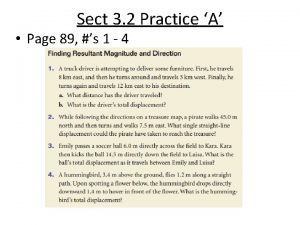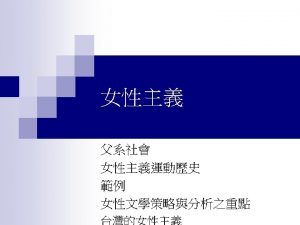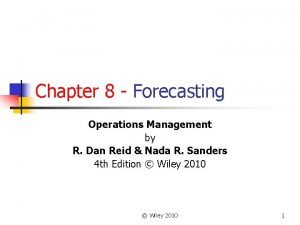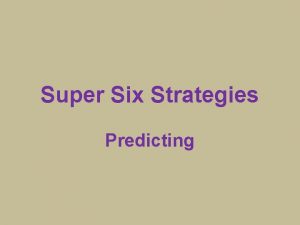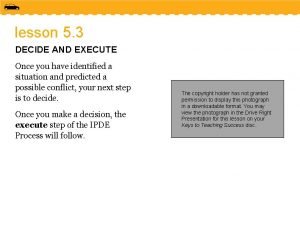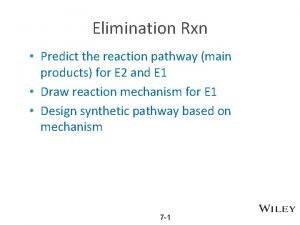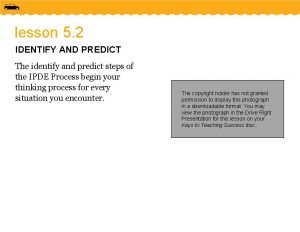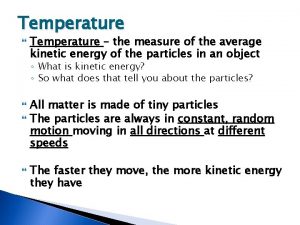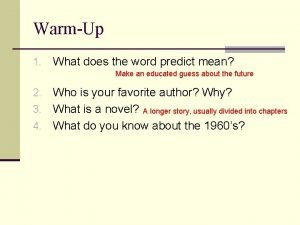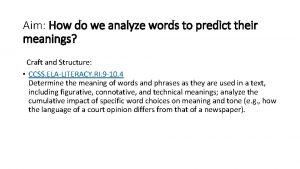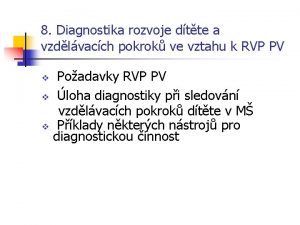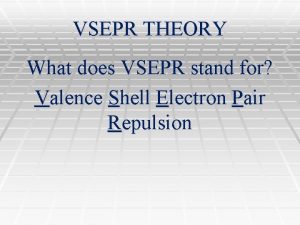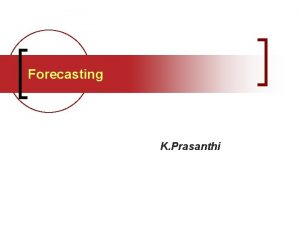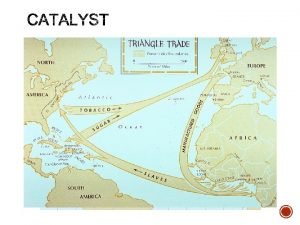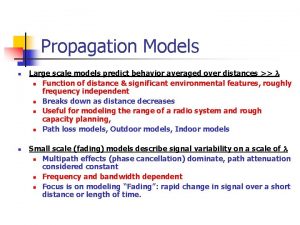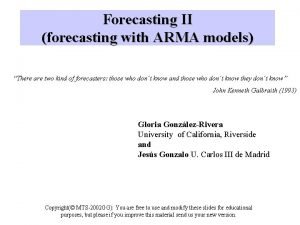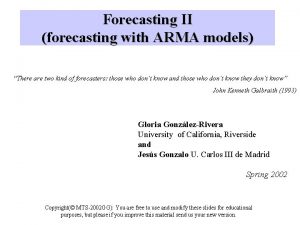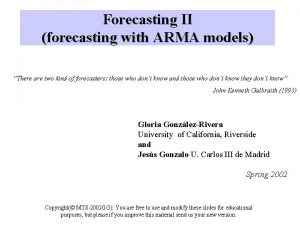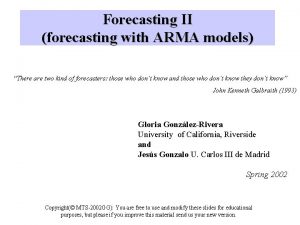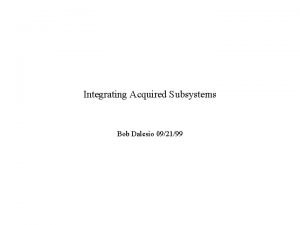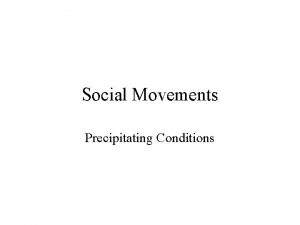Forecasting Models FORECASTING Forecasting is attempting to predict


























- Slides: 26

Forecasting Models

FORECASTING � Forecasting is attempting to predict the future � Decision makers want to reduce uncertainty by predicting future values such as sales or investment return


MEASURING FORECAST ERROR Measures how accurate the forecast was For time period t: Forecast error = Actual value – Forecast value = A t - Ft

METHODS OF MEASURING OVERALL FORECAST ERROR 1 - Mean Absolute Deviation (MAD) MAD = ∑ |At – Ft| / T where T = the number of time periods 2 - Mean Squared Error (MSE) MSE = ∑ (At – Ft)2 / T

METHODS OF MEASURING OVERALL FORECAST ERROR � Mean Absolute Percent Error (MAPE) Measure error as a percent of actual values MAPE = 100 ∑ [ |At – Ft| / At ] / T

STEPS IN FORECASTING 1. 2. 3. 4. 5. 6. 7. Determine the objective of the forecast Identify items to be forecast Determine time horizon Select the forecasting model(s) Gather data Validate model Make forecast and implement results

TYPES OF FORECASTS 1. 2. 3. Qualitative - subjective methods based on intuition and experience Time Series – based on historical data and assume the past indicates the future Causal Models – data based where there may be a cause and effect relation between variables

QUALITATIVE FORECASTING MODELS 1. Delphi Method – an iterative group process where a group of experts attempt to reach consensus 2. Jury of Executive Opinion – uses opinions of high level managers often combined with statistical models

QUALITATIVE FORECASTING MODELS 3. Sales Force Composite – each salesperson estimates sale in his/her own region and forecast are combined for an overall forecast 4. Consumer Market Survey – future purchase plans are solicited from customers

TIME SERIES � � A time series is where the same value is recorded at regular time intervals Examples: daily stock price, monthly sales, annual revenue, etc.

COMPONENTS OF A TIME SERIES 1. 2. 3. 4. Trend – long term upward or downward movement Seasonality – the pattern that occurs every year Cycles – the pattern that occurs over a period of years Random variations – caused by chance and unusual events

TIME SERIES COMPONENTS

TIME SERIES DECOMPOSITION � � A time series can be broken down into its individual components Two approaches: Multiplicative decomposition Forecast = Trend x Seasonality x Cycles x Random 1. Additive decomposition Forecast = Trend + Seasonality + Cycles + Random 2.

STATIONARY AND NONSTATIONARY TIME SERIES DATA � If a time series has an upward or downward trend, it is nonstationary � If it has no trend, it is stationary

MOVING AVERAGES � Smooth out variations in a time series when values are fairly steady � Some number (k) of consecutive periods are averaged k-period moving average = ∑ (actual values in previous k periods) k

WALLACE GARDEN SUPPLY EXAMPLE

WEIGHTED MOVING AVERAGES A moving average where some periods are weighted more heavily than others K-period weighted moving average = ∑ (wi Ai) / ∑ (wi) where, wi = weight for period i Ai = actual value for period i

WALLACE GARDEN SUPPLY WITH WEIGHTED MOVING AVERAGES Period last month 2 month ago 3 months ago Weights 3 2 1

3 -MONTH WEIGHTED MOVING AVERAGE

EXPONENTIAL SMOOTHING � Another smoothing method � Does not require extensive past data Ft+1 = Ft + α x (At – Ft) Ft+1 = forecast for period (t+1) Ft = forecast for period t α = a weight (smoothing constant) At = actual value for period t

WALLACE GARDEN SUPPLY WITH EXPONENTIAL SMOOTHING � Assume the smoothed value for the first month is the actual value � Use α = 0. 1 and also α = 0. 9


TREND ANALYSIS � Fits a straight or curved line through a time series � We will cover only linear trends � A scatter diagram shows the trend � Excel can both create the scatter diagram and fit the linear trend line

THE TREND EQUATION Ŷ = b 0 + b 1 X where, Ŷ = forecast average dependent value X = independent value (time) b 0 = Y-intercept b 1 = slope of the line

SEASONALITY ANALYSIS � When a seasonal pattern repeats yearly, this can be used for future forecasts � Need monthly or quarterly data � A seasonal index is the ratio of the average value in that season, over the annual average
 A truck driver is attempting to deliver some furniture
A truck driver is attempting to deliver some furniture A truck driver is attempting to deliver some furniture
A truck driver is attempting to deliver some furniture Magritte attempting the impossible
Magritte attempting the impossible Difference between model and semi modals
Difference between model and semi modals Statistical forecasting models
Statistical forecasting models Types of forecasting models
Types of forecasting models Predict the product for the following cope rearrangement.
Predict the product for the following cope rearrangement. Predict-o-gram
Predict-o-gram When you apply the ipde process you may decide to
When you apply the ipde process you may decide to Predict meaning of gratifying
Predict meaning of gratifying Predict the products of the elimination reaction.
Predict the products of the elimination reaction. Predict the sources of water
Predict the sources of water What phase is
What phase is Vipers skills
Vipers skills Visualize predict connect clarify
Visualize predict connect clarify Whats the definition of manifest destiny
Whats the definition of manifest destiny Teknik matching dalam penelitian
Teknik matching dalam penelitian Vsper models
Vsper models In orderly visual search pattern
In orderly visual search pattern Temperature measure average kinetic energy
Temperature measure average kinetic energy Endo predict
Endo predict Cherry valance physical description
Cherry valance physical description Analyzewords
Analyzewords Co znamená zkratka nnn
Co znamená zkratka nnn Predict the products of the following reactions.
Predict the products of the following reactions. What does vespr stand for
What does vespr stand for Predict the outcome
Predict the outcome

